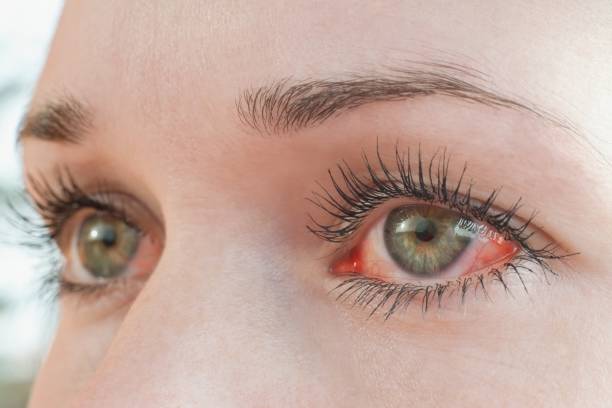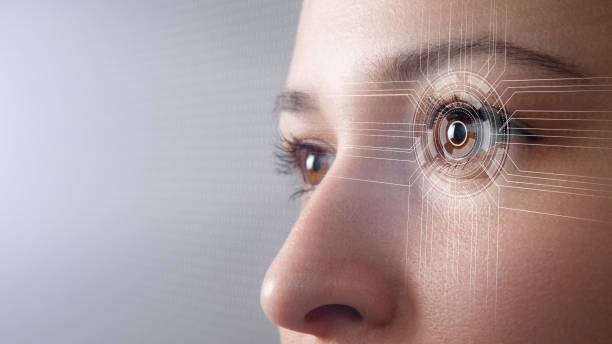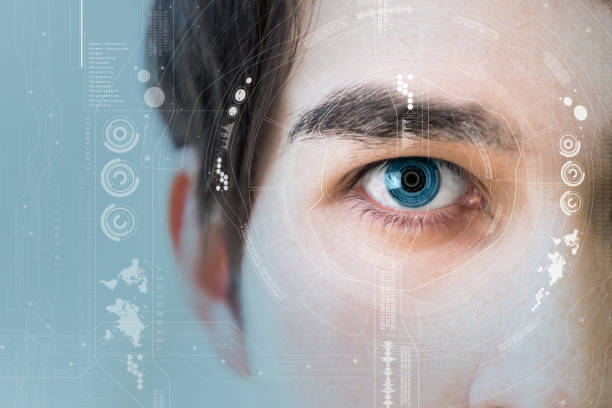Eye health is often something we take for granted—until problems start to affect our daily life. Blurry vision, eye strain, headaches, or sudden changes in sight can make even simple tasks, like reading, driving, or using a smartphone, feel frustrating and unsafe. Many people assume these issues are just a part of aging, but the truth is that most common vision problems can be treated, corrected, or managed with the right care, professional guidance, and healthy habits.
In this guide, we’ll take a closer look at the most common vision issues, explain what causes them, and share practical tips and treatments to fix or prevent them. From prescription glasses and contact lenses to surgical options and lifestyle changes, you’ll learn how to protect your eyes and maintain clear vision. Whether you’re dealing with mild eye strain or more serious conditions, this article will show you how to move from blurry to bright and keep your eyesight sharp for years to come.
Why Eye Health Matters
Clear vision is more than just being able to read a sign across the street. Good eyesight affects nearly every part of daily life, from driving safely and working efficiently to enjoying hobbies and staying independent as we age. Eye problems can also impact overall health, making it harder to manage conditions like diabetes or maintain an active lifestyle. According to the World Health Organization (WHO), at least 2.2 billion people worldwide suffer from vision impairment or blindness, and many of these cases could have been prevented or treated with early care, regular check-ups, or simple lifestyle changes.
Taking steps to protect your eyes now—such as eating a nutrient-rich diet, reducing screen strain, and scheduling regular eye exams—can prevent serious vision problems in the future and help you maintain clear, healthy sight for years to come.
Common Vision Problems and Their Fixes

1. Nearsightedness (Myopia)
What it is:
Nearsightedness means you can see close objects clearly, but far objects look blurry. This happens when the eye is too long, or the cornea is too curved, causing light to focus in front of the retina.
Fixes:
- Glasses or contact lenses – The most common and effective fix.
- Laser eye surgery (LASIK/PRK) – Reshapes the cornea for long-term results.
- Lifestyle adjustments – Spending more time outdoors and limiting screen time can slow progression in children.
Learn more about myopia management from the American Academy of Ophthalmology.
2. Farsightedness (Hyperopia)
What it is:
Farsightedness makes nearby objects blurry, while distant objects may remain clear. It occurs when the eye is too short, or the cornea has too little curve.
Fixes:
- Glasses or contact lenses – Correct the focus of light on the retina.
- Refractive surgery – Options like LASIK or LASEK can help.
3. Astigmatism
What it is:
Astigmatism occurs when the cornea or lens has an irregular shape. This makes vision blurry or distorted at all distances.
Fixes:
- Glasses with special lenses – Correct the uneven curve.
- Contact lenses – Toric lenses are designed for astigmatism.
- Laser surgery – Reshapes the cornea for clearer sight.
4. Presbyopia (Age-Related Vision Loss)
What it is:
As we age, the lens inside the eye becomes less flexible. This makes it hard to focus on close objects, like reading a book or checking your phone.
Fixes:
- Reading glasses – The simplest and most affordable solution.
- Bifocals or progressive lenses – For people who already wear glasses.
- Surgical options – Lens implants are available for some patients.
5. Cataracts
What it is:
A cataract is a clouding of the eye’s natural lens. It usually develops slowly with age and can cause blurred or dim vision.
Fixes:
- Early stages – Brighter lighting and stronger glasses may help.
- Advanced stages – Cataract surgery replaces the cloudy lens with a clear artificial one.
According to the National Eye Institute, cataract surgery is one of the most common and safest surgeries worldwide.
6. Glaucoma
What it is:
Glaucoma damages the optic nerve, often due to high eye pressure. It can cause permanent vision loss if untreated.
Fixes:
- Eye drops – Lower eye pressure.
- Laser treatments or surgery – Improve fluid drainage.
- Regular eye exams – Early detection is key.

7. Dry Eye Syndrome
What it is:
Dry eyes happen when your eyes don’t make enough tears or when tears evaporate too quickly. Symptoms include stinging, redness, and blurred vision.
Fixes:
- Artificial tears – Over-the-counter drops provide relief.
- Prescription treatments – For severe cases.
- Lifestyle habits – Staying hydrated, blinking more during screen use, and using a humidifier.
8. Digital Eye Strain
What it is:
Staring at screens for long hours can cause headaches, blurry vision, and tired eyes.
Fixes:
- The 20-20-20 rule – Every 20 minutes, look at something 20 feet away for 20 seconds.
- Blue light filters – Glasses or screen settings help reduce strain.
- Proper posture and lighting – Avoid glare and adjust brightness.
9. Age-Related Macular Degeneration (AMD)
What it is:
AMD affects the macula, the part of the retina responsible for central vision. It is one of the leading causes of vision loss in older adults.
Fixes:
- Nutritional supplements – Studies show certain vitamins and minerals can slow progression.
- Lifestyle choices – Not smoking, eating leafy greens, and regular check-ups.
- Medical treatments – Injections or laser therapy for advanced cases.
For more, see the BrightFocus Foundation.
Lifestyle Habits to Protect Your Vision
Taking care of your eyes goes beyond just wearing glasses or considering surgery. Small, daily habits can make a big difference in maintaining clear and healthy vision.
- Eat a nutrient-rich diet: Foods high in leafy greens, carrots, citrus fruits, and omega-3 fatty acids support eye health and may reduce the risk of age-related vision problems.
- Protect your eyes from the sun: Wearing sunglasses that block 100% of UV rays helps prevent damage to the retina and reduces the risk of cataracts.
- Take regular breaks from screens: Staring at computers, phones, and tablets for long periods can cause eye strain, dryness, and blurred vision. Follow the 20-20-20 rule—every 20 minutes, look at something 20 feet away for 20 seconds.
- Stay physically active: Exercise improves blood circulation, which helps deliver essential nutrients and oxygen to the eyes, keeping them healthy.
- Schedule routine eye exams: Even if your vision feels fine, regular check-ups can detect early signs of glaucoma, cataracts, or other eye conditions before they become serious.
By incorporating these habits into your daily life, you can protect your eyes, reduce the risk of vision problems, and maintain bright, clear eyesight for years to come.
When to See an Eye Doctor
Not all changes in your vision are normal, and some could signal serious eye conditions that require prompt attention. It’s important to seek medical help if you notice any of the following warning signs:
- Sudden blurry or double vision: This could indicate issues like retinal problems, stroke, or other urgent eye conditions.
- Flashes of light or floating spots: These symptoms may be signs of retinal detachment or vitreous changes that need immediate evaluation.
- Eye pain or pressure: Persistent discomfort or pressure can be a symptom of glaucoma, infection, or inflammation.
- Loss of peripheral vision: This gradual narrowing of vision can be linked to glaucoma or other optic nerve problems.
- Difficulty seeing at night: Night vision issues may indicate cataracts, vitamin deficiencies, or retinal conditions.
Catching eye problems early often makes treatment easier, more effective, and can prevent permanent vision loss. Regular eye exams combined with attention to these warning signs are key to maintaining healthy eyesight and protecting your vision for the long term.

The Path From Blurry to Bright
Vision problems are common, but they don’t have to control your life or limit what you can do each day. Many people successfully manage or correct their eyesight with a variety of solutions, ranging from simple fixes like prescription glasses and contact lenses to more advanced treatments such as laser eye surgery or cataract removal. Even small adjustments—like improving your diet, reducing screen time, and protecting your eyes from UV light—can make a big difference in maintaining healthy vision.
The key to clear, lasting eyesight is awareness and proactive care. Don’t ignore warning signs such as sudden blurriness, double vision, or eye discomfort. Make it a habit to schedule regular eye exams, adopt healthy lifestyle choices, and explore professional treatment options when needed. Taking these steps early not only preserves your vision but also helps prevent long-term eye problems, allowing you to enjoy a bright, clear view of the world for years to come.
Final Thoughts
Your eyes are your window to the world, and keeping them healthy should always be a top priority. Good vision allows you to enjoy everyday activities, stay safe, and maintain your independence. By practicing simple eye care habits—like eating a nutrient-rich diet, protecting your eyes from harmful UV rays, reducing screen strain, and scheduling regular eye exams—you can prevent many common vision problems before they start.
With the right care and attention, you can enjoy clear, bright vision for years to come, stay active, and continue seeing the world in all its detail.
👉 What about you? Have you ever experienced sudden blurry vision or eye strain from screens? Share your story in the comments below—we’d love to hear how you keep your vision bright!

